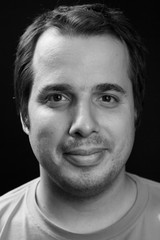
Joan Daemen pronunced [joːˈɑn ˈdaːmə(n)] in Dutch, is a Belgian cryptographer, born 1965, who co-designed the Rijndael cipher with Vincent Rijmen, which was selected as the Advanced Encryption Standard (AES) in 2001. He is also the co-inventor of Keccak, that is AES3. More on Joan Daemen can be found on his webpage.
Talk Title: Innovations in permutation-based crypto
Imagine there's no block ciphers, it's easy if you try:-) A (cryptographic) permutation can be thought of as a block cipher (like AES or DES) without a key (or with a fixed key if you prefer). During the SHA-3 competition it became clear that permutation-based hashing, e.g., by using the sponge construction, is superior to block-cipher based hashing (as in MD5, SHA-1 and SHA-2). By including a key in the sponge input, it can readily be used for message authentication (MAC) and by exploiting the arbitrarily long sponge output even for stream encryption. The duplex variant of sponge widens the spectrum to, among other, authenticated encryption and reseedable pseudorandom generation and was adopted by a dozen submissions to the CAESAR competition for authenticated ciphers. The disadvantage of the sponge and duplex constructions is that they are inherently serial. To address this, we introduced a fully parallel counterpart of the sponge, called Farfalle. Clearly, there is a lot going on in permutation-based crypto and this talk will get you up to date.
click here to view talk

Leo Ducas is is one of the specialists of the post quantum cryptography, especially post quantum cryptography based on hard lattice problems. More on Leo Ducas can be found on his webpage.
Talk Title: The Generalized Sieve Kernel -- or the algorithmic ant and the sandpile.
Lattice reduction is an old mathematical problem, that has turned into an algorithmic one with the seminal work of Lenstra, Lenstra and Lovasz. There application in computational number theory are numerous, and therefore in cryptanalysis. With the ongoing process of standardizing post-quantum cryptography, a refined understanding of the precise efficiency of lattice algorithms is an urgent matter.In this talk, I wish to present the general challenges of designing fast lattice reduction algorithm in practice, and some ongoing progress.
click here to view talk